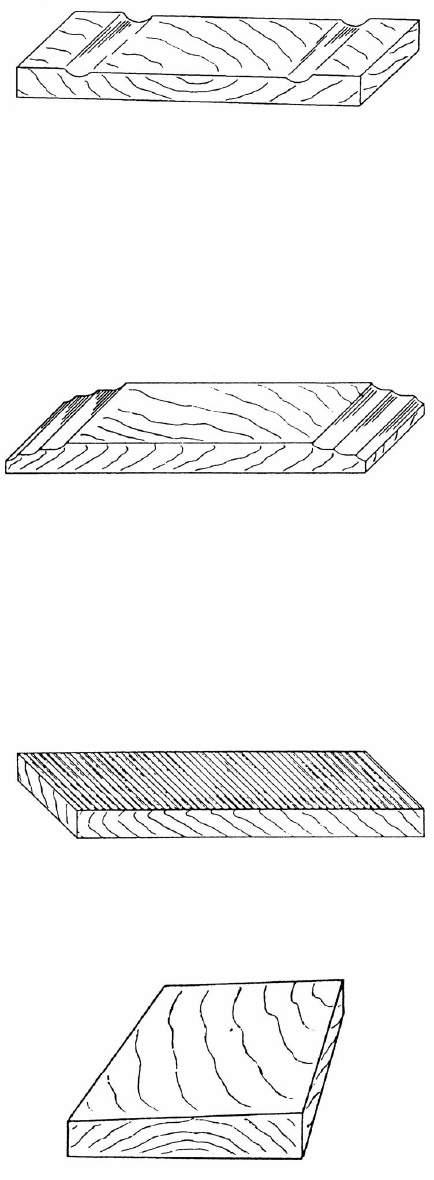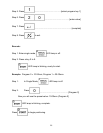
18
Feed restriction can also occur due to pitch
buildup on the table. Be sure the table surface is
clean. Dusting the surface with talc occasionally
will aid in smoother feeding and help prevent
pitch buildup.
Clip Marks
If clip marks occur 6” (152mm) in from each end
of the board, the pressure bar is too high. See
Figure 16. Turn both right and left hand
adjusting screws (see Figure 11) the same
amount, 1/4 turn clockwise or less, and take
another 1/16” (1.59mm) deep cut. Re-examine
the board.
Continue the operate-adjust procedure until the
clip marks disappear. Should the board fail to
feed through, back off slightly on both adjusting
screws until feeding is smooth and the
imperfections do not re-appear. Lock the
pressure bar adjusting screws with the jam nuts
provided.
Snipe
Some amount of snipe may be inevitable with
many planer operations, but proper planer
adjustments can so minimize snipe as to make it
negligible.
If noticeable snipes appear on each end of the
material, as shown in Figure 17, a table roller is
too high causing a slight lift of the material as it
passes through the machine. Normally these
snipes are more noticeable on the trailing end of
the board than on the lead end, and most often
occur during planing of rough lumber.
Table rollers must be elevated for running rough
or resaw lumber through the machine. When
material is turned over to surface the other side,
and you neglect to lower the table rollers for a
finish cut, then definite snipes will appear on the
ends of the material.
Chatter
Chatter marks usually appear on thin material.
See Figure 18. Even at their lowest point, the
table rollers are too high to handle thin material.
Solve the problem by either using a slave board
or making an auxiliary table out of Formica
countertop material with cleating at each end of
the table to keep it stationary over the planer
table.
Tapers
If the machine planes a taper across the full
width of the board, as shown in Figure 19, the
table is not parallel with the cutterhead. First
check that all knife inserts are properly installed.
If they are, then the table itself must be
adjusted. See “Table Adjustments” on page 16.
Figure 16
(clip marks)
Figure 17
(snipe)
Figure 18
(chatter)
Figure 19
(taper)


















